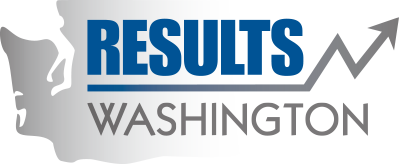Archived: Puget Sound estuaries restored
River delta estuaries form where river floodplains meet the sea, creating a uniquely critical ‘bridge’ habitat where freshwater mixes with salt water and sediments collect. A diverse array of specially adapted plants and animals thrive and take advantage of the fertility there, moving in and out with the tides.
Puget Sound’s sixteen major estuaries provide irreplaceable nursery habitat for young salmon, and important feeding and resting habitat for migratory birds, and many other species that cannot find these unique benefits in any other place in our landscape. For example, young salmon that can rear longer in delta estuaries grow faster and are more likely to survive their ocean migration.
There has been incremental progress inrestoring river estuaries in Puget Sound. We estimate that approximately 2,791 acres of estuarine river delta wetlands have been restored to tidal flooding since 2006, or about 56 percent of the 2016 target of 5,028 acres. The 2,791 acres includes 485 acres recently restored in the Skagit and Snohomish river deltas (respectively, Fir Island Farms and Qwuloolt). Challenges in meeting the target remain with project work constrained by limited human resources, unpredictable capital funding flows, and social conflicts over returning low-lying farmland to the tides.
Funding and restoration
The Puget Sound Partnership secured $37 million in 2015-17 biennial Puget Sound Acquisition and Restoration (PSAR) funding, and Washington Department of Fish and Wildlife (WDFW) secured $8 million in funding for the Estuary and Salmon Restoration Program (ESRP) from the Washington State Legislature. The Partnership works with watersheds to produce a strategic, prioritized list of capital projects from each watershed that are supported with $30 million of the $37 million in PSAR funding. Funding above the $30 million level is applied to large, regionally prioritized capital projects. Previous biennial funding in 2007, 2009, 2011 and 2013 funded the Smith Island Estuary Restoration on the Snohomish River, which will restore 326 acres to estuary and tidal marsh. This project is scheduled to be completed by December 2017, and alone represents over 6% of the 5,028 acre 2016 target, and over 25% of the restoration goal of 1,237 estuarine acres for the Snohomish Conservation Plan. Although these investments have significantly furthered regional progress, funding levels have been significantly less than what is needed to meet the targets for Puget Sound restoration.
Communication, coordination and planning
In the summer of 2014, the National Oceanic and Atmospheric Administration (NOAA) and several state agencies formed a “Delta Consortium” to work with Tribes and local organizations to create a shared, strategic roadmap to help coordinate and accelerate restoration. As part of that effort, the Consortium interviewed all Puget Sound salmon recovery Lead Entities to document the social and technical barriers to delta restoration, and the Partnership began an assessment of the effectiveness of restoration efforts across the major deltas. This project formed the foundation for the new estuary Implementation Strategy, now under the stewardship of the Habitat Strategic Initiative Lead (WDFW and Washington Department of Natural Resources). Currently, staff at WDFW, the Partnership and NOAA are working to coordinate across local, state, federal and tribal organizations to advance strategies that accelerate estuary restoration in Puget Sound.
Volunteer to participate in conservation and restoration work related to estuary ecosystems in your watershed or local area.
